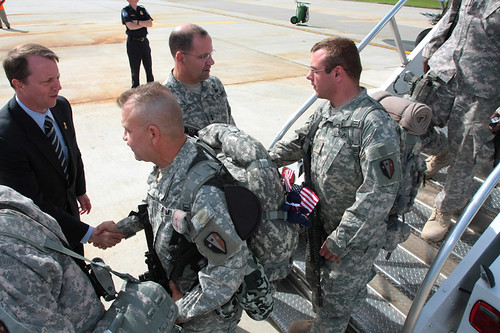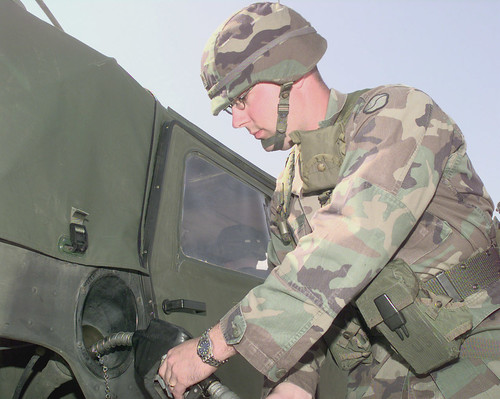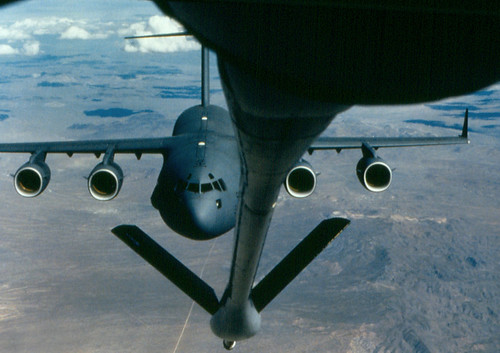In a brilliant article, Esquire’s Brian Mockenhaupt goes deep into the world of UAVs (aka Drones) and those who operate them for the US military. Here are some interesting excerpts from this lengthy, 5-page article, which is a MUST READ material if you are a tech junkie or an aviation nut..
At this very moment, at any given moment, three dozen armed, unmanned American airplanes are flying lazy loops over Afghanistan and Iraq. They linger there, all day and all night. When one lands to refuel or rearm, another replaces it. They guard soldiers on patrol, spy on Al Qaeda leaders, and send missiles shrieking down on insurgents massing in the night. Add to those the hundreds of smaller, unarmed Unmanned Aerial Vehicles being flown over the two countries by the Army, the Marines, and coalition countries, and a handful of missile-laden planes owned by the Central Intelligence Agency circling above Pakistan. Efficient and effective, the planes have fast become indispensable assets, transforming today’s battlefields just as profoundly as the first airplanes transformed warfare during World War I.
Every so often in history, something profound happens that changes warfare forever. Next year, for the first time ever, the Pentagon will buy more unmanned aircraft than manned, line-item proof that we are in a new age of fighting machines, in which war will be ever more abstract, ever more distant, and ruthlessly efficient.
The Air Force now has 138 Predators and 36 Reapers. The military’s overall UAV inventory has swollen to seven thousand, from hand-launched Ravens to jet-powered Global Hawks, which can fly twelve miles high and monitor a swath the size of Kentucky in a day. And the revolution has just begun. Within the next twenty years, the Air Force envisions unmanned planes launching tiny missiles in hypertargeted strikes, swarms of bug-sized UAVs, and squadrons of networked unmanned fighters, bombers, and tankers, many of which will fly autonomously. And the enemy will have unmanned planes, too. More than forty countries currently fly them. In February, an American F-16 shot down an Iranian drone flying over Iraq. And Hezbollah has used them to spy on Israel and attack a ship during fighting in 2006. They can be built cheaply, with off-the-shelf software and hardware, a natural progression for insurgents who have been building increasingly sophisticated bombs.
Much of the U.S. Air Force Predator and Reaper fleet for Afghanistan is maintained out of a small cluster of buildings and tents next to the runway at Kandahar Airfield. It is here that I saw the planes up close for the first time. Where fighter jets are at once sleek and muscled, these planes look emaciated. Rap a knuckle on a rib cage and hear the hollow reply. It’s hard to see how this is the plane that’s revolutionizing warfare. Perched on twiggy landing gear, it looks less like a piece of deadly, cutting-edge military hardware than an oversized version of the windup balsa-wood planes boys build from kits. Twenty-seven feet long, with a forty-nine-foot wingspan, the Predator weighs just twelve hundred pounds without fuel or missiles. A four-cycle snowmobile engine mounted in the rear propels it with a high-pitched whine. The Reaper, a third bigger than the Predator, seems far sturdier, and with a larger engine it flies at three hundred miles per hour, three times faster. The next generation will be jet-powered with a three-thousand-pound payload. Yet even the wispy Predator has a menacing quality. Glass-bubbled cockpits remind us that man controls the killing machine.
The planes are also much cheaper to buy and fly. A Predator costs about $4 million and a Reaper $11 million, half as much as an F-16, one of the Air Force’s workhorses. In Iraq and Afghanistan, jets and UAVs are often called on for similar missions that support ground troops. The drones can’t do strafing runs or intimidate with a low, fast, ear-splitting flyover, but they use a fraction of the resources, a moped instead of a monster truck. F-16’s, which fly in pairs for safety, burn about a thousand gallons of fuel an hour. At that rate, they can stay over a target for about an hour before they must swap out with other planes or fill up at an aerial tanker. A Predator carries a hundred gallons of fuel with which it can stay aloft for twenty-four hours. As the Air Force likes to point out, a bomb from an F-16 killed Abu Musab al-Zarqawi, but the final strike against the Iraqi insurgent leader came after Predators had gathered six hundred hours of surveillance footage in the hunt for him and his associates. Keeping two F-16’s in the air that long would require about 120 tanker trucks’ worth of fuel.

Although they have never set foot in Afghanistan, Nelson and Anderson make effective counterinsurgents. They have spent hours watching the same roads, the same villages, the same people. “You gradually gain a better understanding of who they are and how they live,” Nelson says. He felt the same during his Mormon mission to the Dominican Republic, after his sophomore year at the Air Force Academy. For two years he walked or rode his bike on unpaved roads through villages and talked to people twelve hours a day. There he saw homes made of coffee cans and palm fronds. Now he gazes at houses made of mud bricks. To balance out the lack of human interaction, he has taken Afghanistan-familiarization courses offered by the Air Force. “You can picture them more as a people and a civilization,” he says.
Indeed, they see many things meant to be secret, like men having sex with sheep and goats in the deep of night. I first heard this from infantry soldiers and took it as rumor, but at Bagram I met a civilian contractor who works in UAV operations. “All the time,” he said. “They just don’t think we can see them.” Which sums up a major allure of UAVs: Though they should know better by now, many insurgents still feel safe working in darkness or in the shelter of distant mountains and valleys, so they are exposed again and again. The unmanned planes have eroded their freedom of movement and simple early-warning systems, two of their few assets when outmatched in weapons, technology, and resources. Helicopters can be heard a mile or more away. Spotters watch vehicles leave bases and follow the slow advance of dismounted patrols. Surprise is a rarity for U. S. forces in Iraq and Afghanistan. The insurgents almost always know they’re coming, with at least several minutes’ notice. So they toss weapons behind a rock and become, in an instant, civilians. But with a camera parked three miles overhead, last-minute subterfuge doesn’t work.
Enter the Betas, the future armchair fighter jocks. The Air Force is now training a first-ever test group brought straight into the Predator program. After six months of screening and basic flight instruction, the Betas started a nine-week initial qualification course at Creech, the same taken by pilots, which includes forty hours in a simulator and nine or more actual flights. The eight Beta students were still in the academics phase when I visited Creech, but the nonpilots, who came from jobs like military police, civil engineering, and acquisitions, had so far performed as well as trained pilots, Gersten says. For this type of work, how they grew up might be more important than whether they’ve logged a thousand hours flying supersonic. “This generation, where were they when 9/11 started? They were in junior high and high school,” Gersten says. “And they grew up with the very technology that we fly with here.” Those who dreamed of being fighter pilots might never get the chance as the skies unman, but America’s pool of gamers, texters, and TV watchers is certainly vast and deep. The Betas’ progress is being closely tracked by the Pentagon, which can build plenty of planes if it has the people to fly them.











